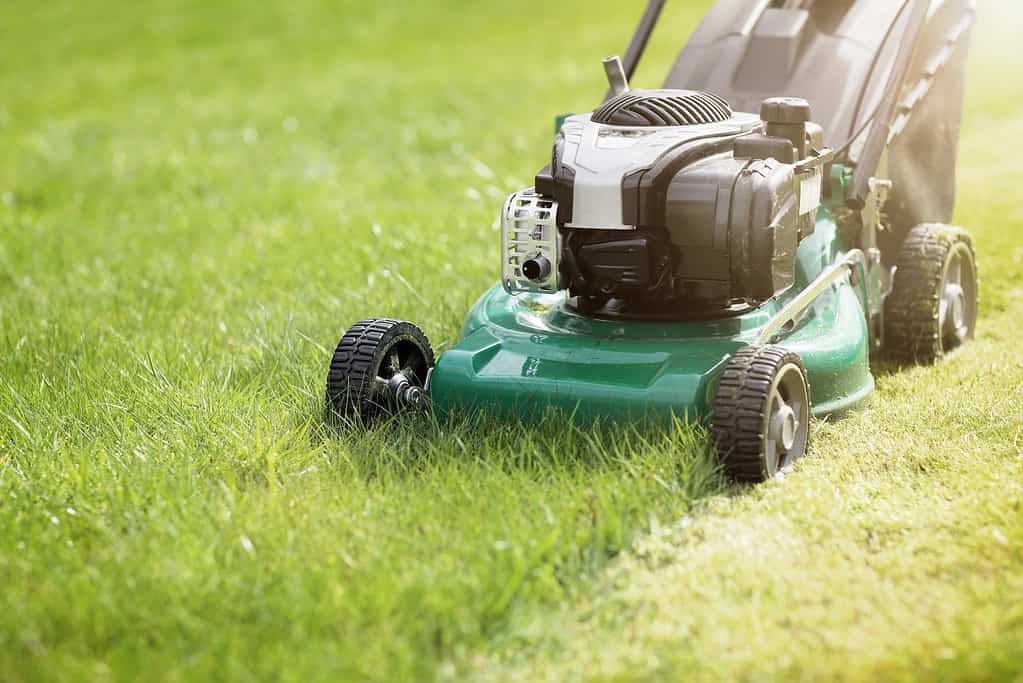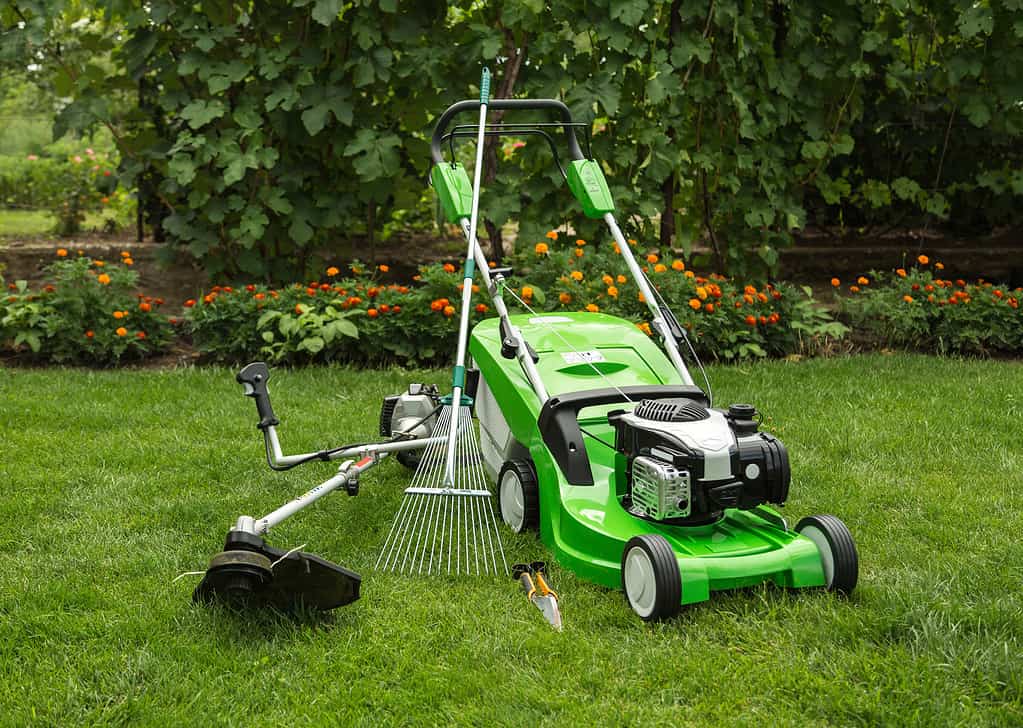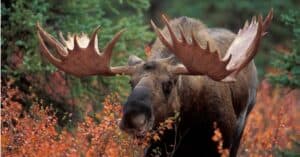There’s a saying in lawn care that goes, “If it’s growing, keep mowing.” As the cooler temperatures set in, there are plenty of things you’ll want to do to prepare your grass for winter.
In fact, you should cut it between two and two and a half inches long as autumn comes to a close. It all depends on the type of grass you have and what winter weather is like in your region.
Here are some helpful tips and lawn care insights to ensure your grass is well taken care of for the upcoming season.
Winter Grass Lengths

Mowing your grass before winter can keep it healthy longer.
©BrianAJackson/iStock via Getty Images
When the air temperatures fall below 50 degrees Fahrenheit during the day, cool-season turfgrasses begin to reduce their leaf growth. Reduce the height to a couple of inches over the final few trims of the season.
You should generally cut a third of the length of the grass blades each time. For example, if the grass is three inches long, trim one inch off. When it comes to the final mow before winter, experts vary on the ideal height.
Some say an inch, while others think nearly three inches is ideal. Save this table to keep track of when you should mow the grass.
| Type of Grass | Ideal Length (in inches) | When to Mow (in inches) |
|---|---|---|
| Bahia | 3 to 4 | 4 to 5¼ |
| Common Bermuda grass | 1 to 2 | 1¼ to 2½ |
| Centipede | 1 to 2 | 1¼ to 2½ |
| Hybrid Bermuda | 1 to 1 ½ | 1¼ to 2 |
| St. Augustine | 2 to 3 | 2½ to 4 |
| Zoysia | 1 to 2 | 1¼ to 2½ |
| Fine fescues | 2½ to 3 | 3¼ to 4 |
| Kentucky bluegrass | 2½ to 3½ | 3¼ to 4½ |
| Perennial ryegrass | 1½ to 2½ | 2 to 3¼ |
| Tall fescue | 3 to 4 | 4 to 5¼ |
In order to save any delicate new growth that appears prior to dormancy, try to have the lawn cut as short as you can by the end of autumn. Animals that prefer to burrow in wintertime may get attracted to vegetation that is tall.
When spring rolls around, you may find yourself with a myriad of nests and burrows in the grass. Then, mowing can become quite dangerous to small wild animals.
Grass Care Tips for Winter
Now that you know about what height your grass should be as winter arrives, here are some other helpful tips and tricks to help your lawn thrive!
1. Fertilize for Nutrients

Filling a spreader with fertilizer can make the job much easier.
©iStock.com/
Put fertilizer on the grass prior to the first freeze to prevent all of the nutrients in the soil from depleting. The fertilizer will stay in the soil throughout the winter, feeding the roots of the grass when the temperature drops.
The nutrients that the ground loses in the hot, dry summer months are restored by fertilizing the soil in colder months.
2. Avoid Ice Melt

Ice melt is not only harmful to grass, but it can also hurt pets!
©V_Sot/iStock via Getty Images
Whether you’ve never used ice melt solutions before or you use them frequently, you should be aware of the possibility of lawn damage. In grassy areas bordering paths, landscaping, and sidewalks, be aware of using ice melt.
Although it comes in handy to keep these areas safe, if it touches the grass along any pavement, you’ll see damage come springtime. Go over the product’s packaging carefully before using it in these spaces.
3. Avoid Walking on Grass in Winter

Stick to pavement pathways whenever possible during the winter.
©UWMadison/iStock via Getty Images
Did you know that you shouldn’t walk on short, brown grass? This can be easy to forget, especially if the grass is covered in fluffy white snow. Try to avoid walking on grass altogether once temperatures drop.
Although grass can withstand some wear and tear, it will struggle to bounce back if a path develops from consistent foot traffic. Wintertime is also the season when your soil is most susceptible to compaction.
If you can, skip walking on your grass until the temperatures rise in the spring.
4. Clear Disease-Causing Leaves

Raking and mulching your leaves can benefit your yard during all seasons.
©Vitalliy/iStock via Getty Images
Your lawn may have become overgrown with leaves in the fall, which increases the risk of it being overgrown before winter. In addition to being overly damp, leaves kept on the grass may attract disease.
Utilize your lawnmower and mulch the leaves into small pieces. This can give your lawn a bit of nutrients throughout the cooler months. If there are any thick leaves that are matted into the grass, rake them up.
5. Water the Lawn

Morning is the best time to water your grass.
©iStock.com/MaYcaL
When autumn comes around, don’t stop watering your lawn! You run the danger of ruining the turf layer throughout the winter if the grass does not receive a minimum of half an inch of water every two weeks.
Luckily, it’s not much, and unless there is an extreme drought, rain can help with this. In the winter, you can cut your watering schedule in half and only water when necessary to make up for the lack of rainfall.
Of course, if you live somewhere that receives snow, you can skip watering throughout the winter.
Summary of Tips and Tricks for Winter Lawn Care
| Tip | Benefit |
|---|---|
| Fertilize For Nutrients | Fertilizing your lawn can help it stay healthy as temperatures lower. |
| Avoid Ice Melt | Ice melt can damage grass along the pavement. |
| Avoid Walking on Grass in Winter | This helps prevent unwanted pathways. |
| Clear Disease-Causing Leaves | Mulch leaves for extra nutrients. |
| Water the Lawn | Don’t stop watering the lawn just because the weather cools down. |
Thank you for reading! Have some feedback for us? Contact the AZ Animals editorial team.








